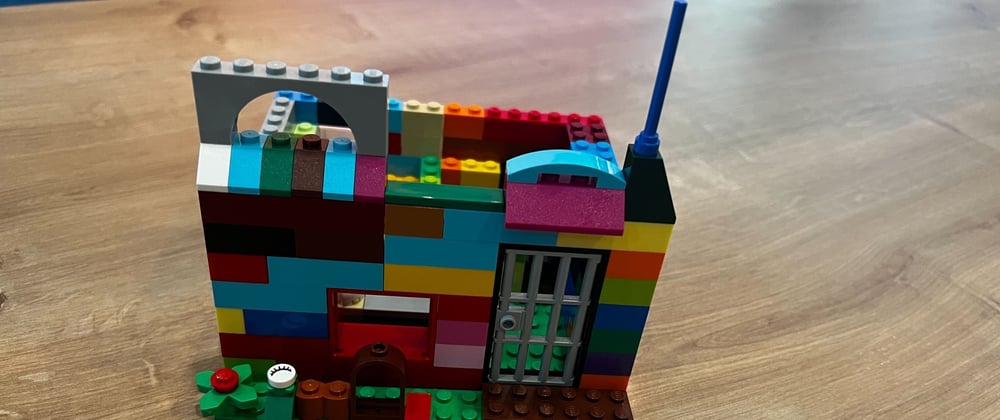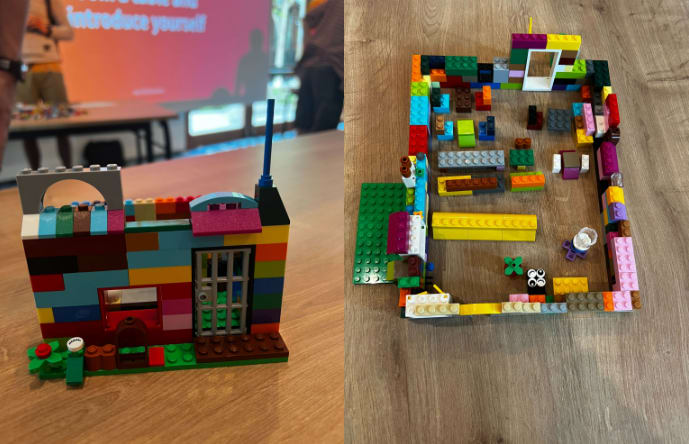TL;DR: This is a little tale of how we broke the ice between our employees, got to play with lego, and still managed to squeeze in a lesson or two on good engineering practices.
Our company is growing, fast! With exploding from 150 to 370 strong team new in the last year, there are continually new faces to try and meet. As we are a highly remote company, meeting new faces can be a daunting and Donut filled task. So when the opportunity to meet everyone, face to face, presents itself, you have to make the most of it.
During our recent all-hands event, 140 people from our technical orgs came together for a day of mingling and connecting. 49% of the attendees were within their first 6 months of being at the company, with a whopping 80% of attendees being with in first year. With so many faces in one place, it can be intimidating for the tenured folk and a complete sea of unfamiliarity for the newer people.
Lego Ice Breaker Challenge
In order to relax everyone and have a bit of fun, we kicked off the day with a Lego "ice breaker" challenge. Team of 8 were formed, consisting of 4 people with less than 6 months tenure and 4 with over 6 months tenure. After giving people a moment to say their names and mingle, the teams were split into two sister teams.
Part 1: Sometimes we get to create a model masterpiece
For part 1, each sister team was provided one of two instruction envelopes and half a box of # 10698 lego. The "A" team was tasked with building a model house, and the "B" team with a model cafe. Each instruction set included choosing from a list of options, creating the structure and furniturishings.
Team's were given 15 minutes to build as much of their model as they could. Trading of bricks was encouraged, in case one team had too many of a particular type of valuable building materials.
At the end of the 15 minutes, teams were asked to step back from their creations and we asked a few questions through a show of hands and audience response:
- Did your team self-organize or plan first or did it jump straight into building?
- Did any teams change their plan during the build?
- Did any teams trade bricks with other teams?
- Is there anything your team would do differently next time?
Nearly everyone managed to get over 80% of their model built in the time frame, with about a 1/3rd of teams trading for bricks. Most teams jumped straight in and designed as they built, with only about a quarter designing before building.
Part 2: Sometimes we are maintaining someone else's creation
While building something from scratch is great fun, some days we are tasked with maintaining and improving someone else's creation.
Teams were handed a second envelope that included changes and upgrades to the models. Before teams were allowed to open their second envelope, and without prior warning, teams were asked to switch with their sister team. Teams would now have to open the second envelope and improve their sister teams creation. (Note: If you are planning on running such an event, keep the switch a surprise. The collective groan from a large audience realizing what just occurred is :chefs kiss: )
The second set of instructions included modifications to the original plans, and another list of possible extensions to add. Teams were required to ensure that both the first and second set of instructions were followed. Most teams were left scratching their head to what stood in front of them, while some teams quick to realize they could still communicate with their sister team and get some knowledge handover.
Teams were given just 10 minutes to modify the creation and ensure both Part 1 and Part 2 were complete. Team's learnt from their first round of building and were incredibly crafty and creative in solving the design problems with the limited remaining bricks.
Upon the timer ringing out to stop, we walked around with a mic and asked one member of each team to answer two questions for us:
- What did your team do well and not so well?
- What could your sister team have done to make maintaining/modifying their creation easier?
The most interesting responses included:
- Most teams found it difficult to figure out what the original team had built.
- Some teams worked in much closer collaboration for round two, resulting in a high level of information and block sharing.
- A few teams had sorted the lego by block type and/or color, making it easier for the next team to get in and start building.
- One team gave high praise to their sister team for building on top of a design drawing with labels to what each room was, leaving them with clear documentation of the design.
All a bit of fun, with a bit of learning mixed in
The whole exercise took less than an hour to complete, but it broke the ice between people with a level of success that we hadn't expected. The room was alive with chatter, people were laughing and making new connections.
Even though teams were playing with lego, they ultimately saw the link back to software development. Building something new can be fun and exciting, but we should endeavour to create cleanly and keep good documentation for we never know when our creation will unexpectedly by handed to another team (or we get handed someone else's creation).
If you want to try this exercise with your team, you can find the instructions for the teams here: https://github.com/ESchippers/Lego-ice-breaker










Oldest comments (1)
Wow! This is such a cool ice breaker. Definitely sharing this one with the team to see if we can do something like this in the future.
Appreciate you writing this up!